Uluṟu is a rock formation located in the heart of Australia, Northern Territory, near Alice Springs. Uluru, and other geological curiosities around (like Mount Olga) is part of the Uluru-Kata Tjuta. The park, covering an area of 1325km ² created in 1987, was classified in the same year as a UNESCO Natural Heritage Site world.
Location of the Uluṟu-Kata-Tjuta national park
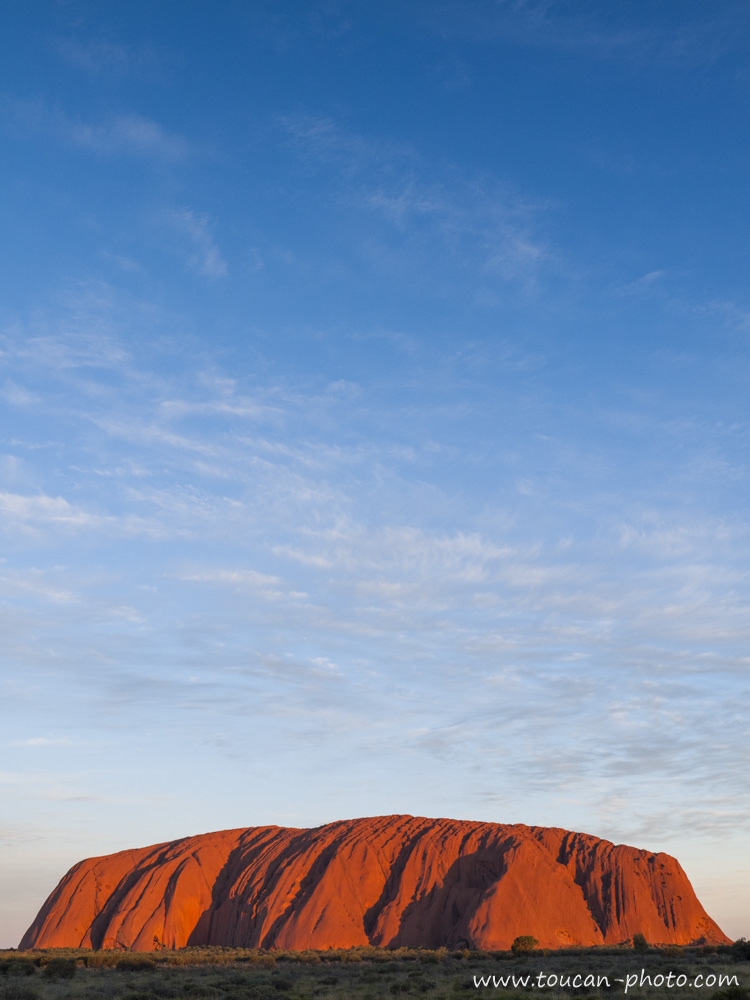 Uluṟu/Ayers Rock
Uluṟu/Ayers Rock
Names:
Uluṟu is the name given by natives (Anangu) at this sacred rock their eyes. Although this word does nothave precise meaning in the Anangu culture, but It is sometimes used to define or translate the words “protection”, “long sleep”, “journey” or “freedom”… Renamed «Ayers Rock» in 1873 by William Gosse, the first explorer European to have visited the site, the building now bears the double name Uluṟu/Ayers Rock.
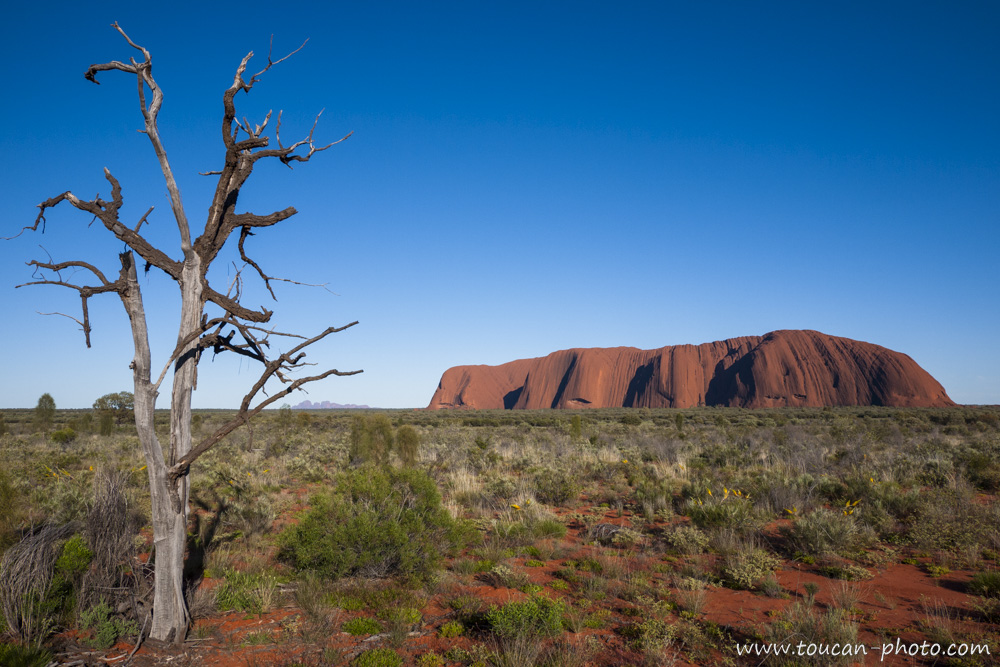 Uluṟu/Ayers Rock, in the heart of Uluru-Kata-Tjuta National Parc, and at the horizon line, the Mount Olga
Uluṟu/Ayers Rock, in the heart of Uluru-Kata-Tjuta National Parc, and at the horizon line, the Mount Olga
Geology:
Contrary to popular belief, Uluṟu is a monolith, but only emerged part (348 meters above ground) the rock formation that continues deep underground and it is called “mountain-island” (like an iceberg is rock) second largest “mountain-island” in the world after Mount Augustus, located also in Australia.
Uluṟu is a sandstone rock formation very homogeneous, since it does nor diaclase or cleavage, it is very resistant to erosion and wear of time, since, only the outer portion subject to bad weather. It is therefore very likely that its shape is not changed for 10,000 years, when the first Anangu people settled in the region.
It is also because of ferrous elements that make the Uluṟu’s sandstone that characteristic red / brown colour. The oxidative effect of these ferrous rock, change the grey colour from the inside to rusty.
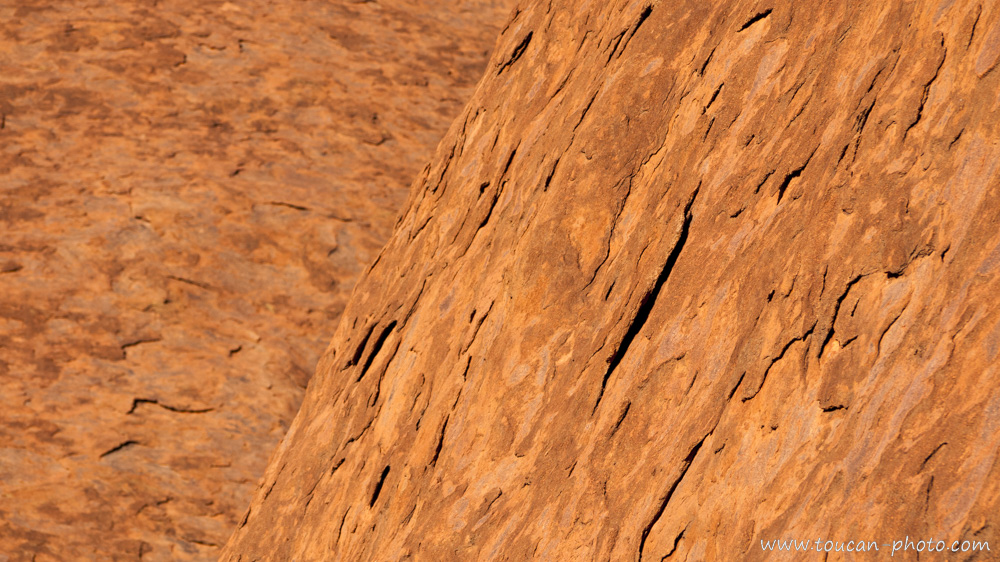 Uluṟu’s stone detail, under the oxydized crust, tiny grey rock appears
Uluṟu’s stone detail, under the oxydized crust, tiny grey rock appears
Uluṟu in the myth of the creation of the world:
According to the tradition of the Australian Aborigines, the “Dreamtime” (Tjukurpa Anangu language) is the period during which the world not yet existed, but was being created by the “Great Minds”, whom appeared in the form of plants, humans or animals. That’s for example, when were created the great rivers, which are borrowed from a spirit snake footprint.
Uluṟu and was erected by two children playing in the mud after rain.
They would have done this hill of mud so they could slide on the side.
Traces of these different slides are also still visible throughout Uluṟu.
Today, the “Great Minds” would be held in Uluṟu, making this site one of the most sacred to Anangu culture*.
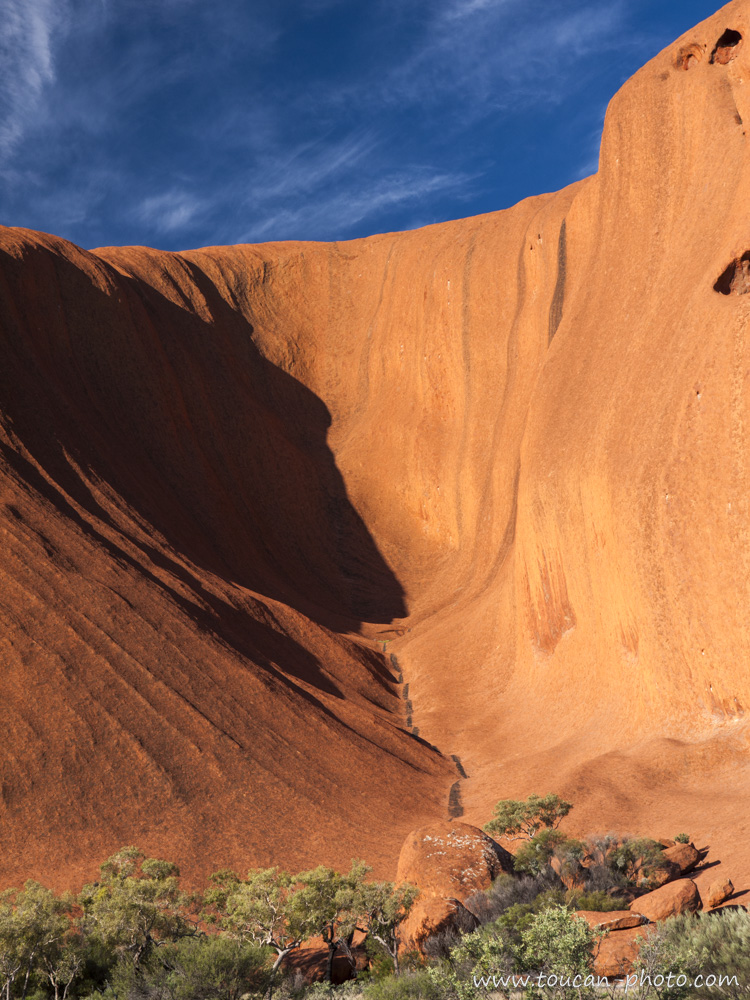 A «Slide trace» on the Uluṟu’s side
A «Slide trace» on the Uluṟu’s side
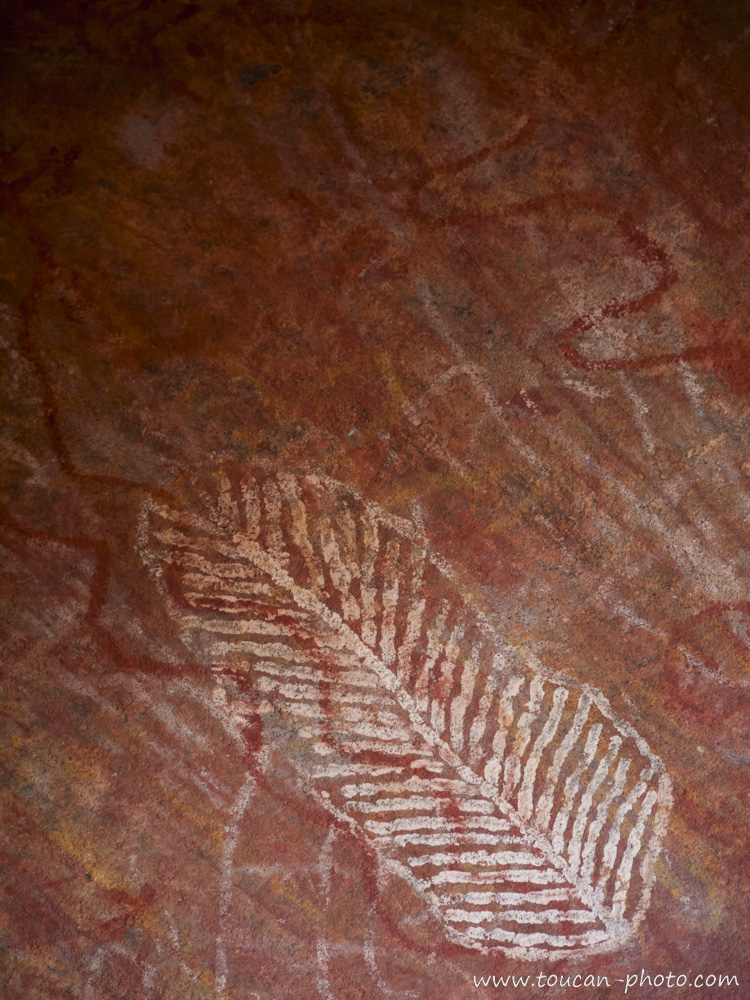 Rock Painting
Rock Painting
History and future:
Uluṟu which “belonged” to the Australian government before that, was surrendered to Anangu people in 1985, in exchange of granting a lease and operating for 99 years to the National Parks and Wildlife agency.
This organization is still seekingthe best way forward in site management.
For example, perceived as a sacrilege in Anangu culture, the National Parks and Wildlife agency, fearing a desertion of tourists, still doesn’t prohibits to climb Uluṟu.
On the other hand , the photography of some areas of Uluṟu that may affect the Aborigines was prohibited (these areas are normally reserved for an elite , but it is very difficult for the National Parks and Wildlife agency to monitor them.
*Climbing Uluṟu and photograph these prohibited areas has obviously not been done for the realization of this article
And now?
See more pictures from Australia
or
Read the paper about the australian Pinnacles Desert